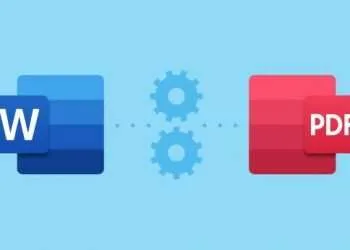Having a long-tail keyword strategy is important if you want people to find your website on Google. When optimizing your products’ pages, try to optimize for long tail keywords instead of focusing on one or two overly-used popular phrases. Since this is a new marketing technique and less competitive, there’s still room for profit and popularity for even small businesses.
It may seem overwhelming to compete with the ‘big guys’ like Amazon, but think of it this way: Just as Wendy’s and Burger King always seem to find a location next to McDonald’s by mimicking their practices, the writers of product descriptions can use long-tail SKU keyword research to find placement on search results pages.
Using SKU product numbers is especially effective when advertisers use dynamic keyword insertion ads, or DKIs, to target customers searching for a specific product by its SKU, for example, ink cartridges, and dynamically create ads with their exact keywords. With this niche marketing schema, your chances of being found are much higher for long-tail keywords.
Besides saving time and human effort, creating relevant tags and product data points allows you to automatically categorize your e-commerce products, which creates a taxonomy system that makes it easier for your clients to find exactly what they want.
The goal of product categorization is to provide customers with quick and easy access to what they need, thereby reducing customer churn.
Therefore, in today’s article, we’re going to tell you exactly what to include in your product description to boost sales. So, read on to learn all about it!
Product descriptions that work and those that don’t
You may wonder how you can determine whether a product description is “bad.” Well, it doesn’t really depend on the text length or the language used.
It isn’t always necessary to go into great detail in the product description. It is simply a matter of explaining what the product does and why it should be purchased. Nothing more, nothing less – just what the shopper needs to know.
The opposite is true of a poor product description. You should consider it this way: If, after reading a product description, you are still unclear about it, it failed to meet its purpose.
Here are a few tips to ensure your customers get all the information they need.
Write descriptions based on your buyer personas
Good product descriptions begin with researching, understanding, and identifying buyer persona. You can’t write a description of your product without knowing who is going to buy it. It is important to keep your buyers in mind when you are selling products.
Consider aspects like end users, if people are buying for themselves or others and if these are wholesale clients, besides the basic information such as ages, interests, and demographics.
You will likely use a different description for a jacket that you are selling to a teenage girl than for a coat meant for aged people.
Become familiar with your product
Let’s say you have a phenomenal product. But do your customers know it? Do they understand why they should get it? Knowing your product from the inside out will make it easier for you to sell it to anyone. The best way to practice writing product descriptions is to set a timer for 10 minutes to list as many attributes as possible. Include things like the sizing, materials, design, target audience, occasions it would be perfect for, and the number of units it has. This list will help you pinpoint the essential features and make writing descriptions easier.
Motivate your customers with benefits and features
Considering your buyer personas will also help you understand their motivations and concerns for purchasing. As a result, you will have to determine which features or benefits to include in your product descriptions. The following should be considered when writing benefits and features descriptions:
- Each feature does not need to be listed. Decide the top three characteristics and list them.
- Give an explanation of what each feature offers.
- Describe how your product adds value to the customer’s life.
- When listing benefits, remember your buyer personas. Tell them your product is comfortable and fits if they’re buying for fit or comfort.
Reflect your brand’s tone of voice
You might notice that the product description tone varies depending on the brand. There’s nothing wrong with that. A product description should reflect your motivation and vision. What is the tone of your brand? Is it professional or conversational? What type of humor do you prefer, tongue-in-cheek or more formal?
Utilize bullet points to make the content more readable
For product descriptions, bullet points are recommended if possible. You must be wondering, what’s the reason? Well, people love skimming. Nowadays, most people don’t have time to read everything they find online. Details are important to them. Information can be presented in bullet points in a concise and clear way.
Simple bullet points can be a good start, particularly if there are not many details to describe the product. However, you can also use them in other ways. The block text on Amazon actually contains bullet points.
The Way Forward
Creating compelling and stellar product descriptions isn’t as hard as you might think it to be. The key is to know your product as well as the target audience. Once you’ve got this basic knowledge, you can create amazing descriptions in no time. And we hope that this brief guide will help you in doing it.















